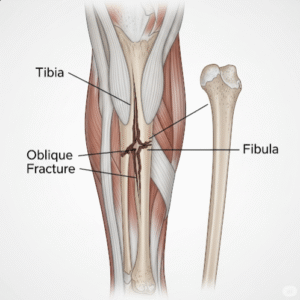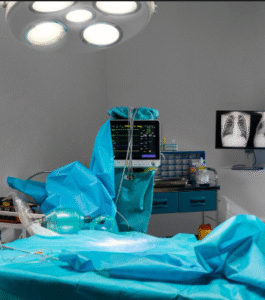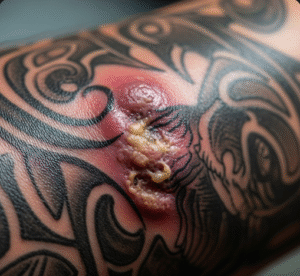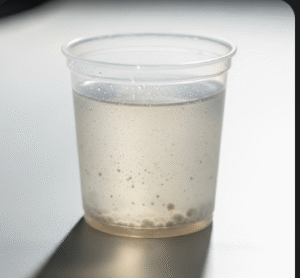Overview
A bilateral vasectomy is a common surgical procedure used as a permanent method of male contraception. It involves cutting or sealing the vas deferens—the tubes that carry sperm from the testicles to the urethra—on both sides (bilateral). Once completed, semen no longer contains sperm, preventing pregnancy while still allowing normal sexual function and ejaculation.
In South Korea, bilateral vasectomy is performed using advanced, minimally invasive techniques, such as the no-scalpel vasectomy (NSV). Korean hospitals are well known for their high surgical standards, painless anesthesia options, and discreet medical services, making them a preferred choice for men seeking safe and effective sterilization.
What is Bilateral Vasectomy?
A bilateral vasectomy is a minor outpatient surgical procedure performed on men who want a permanent solution to birth control. It is called “bilateral” because both vas deferens (right and left) are blocked. Unlike other contraceptive methods that are temporary, a vasectomy is considered a permanent form of sterilization.
Key facts about bilateral vasectomy:
- Quick procedure (15–30 minutes)
- Performed under local anesthesia
- No effect on hormones, libido, or sexual performance
- Highly effective – over 99% success rate
This procedure is especially popular among couples who no longer want children and wish to avoid the risks associated with female sterilization.
What are the Benefits?
Bilateral vasectomy offers many long-term advantages:
✔ Highly effective – permanent contraception with success rates above 99%
✔ Simple, quick, and minimally invasive procedure
✔ No impact on testosterone, erections, or sexual drive
✔ Cost-effective compared to lifelong use of other contraceptives
✔ Fast recovery with very few complications
✔ Advanced no-scalpel techniques in Korea ensure minimal pain and scarring
Procedure Details
1) How should I prepare for Bilateral Vasectomy?
Before the surgery, preparation is straightforward:
- Consultation with a urologist to discuss family planning and confirm the decision.
- Medical history review to rule out bleeding disorders or infections.
- Shaving or trimming of scrotal hair as advised by the doctor.
- Avoid blood-thinning medications (aspirin, warfarin) for 1 week before surgery.
- Arrangements for transport home, as patients may experience mild discomfort after the procedure.
In Korea, hospitals provide detailed counseling sessions to ensure patients fully understand the process and alternatives.
2) What happens during the procedure Bilateral Vasectomy?
The procedure typically takes 15–30 minutes:
- The patient lies comfortably under local anesthesia (sometimes sedation if requested).
- The surgeon uses either the traditional incision method or the no-scalpel vasectomy (NSV).
- In NSV, a small puncture is made to access the vas deferens with minimal bleeding.
- Each vas deferens is cut, tied, cauterized, or sealed with clips to block sperm flow.
- The skin is usually closed with absorbable stitches or left to heal naturally.
South Korea’s advanced clinics often prefer no-scalpel or laser-assisted vasectomy, ensuring faster healing and virtually no visible scarring.
3) What happens after a Bilateral Vasectomy?
Post-surgery recovery is generally smooth:
- Mild discomfort or swelling for 2–3 days, manageable with pain relievers.
- Supportive underwear recommended to reduce strain.
- Ice packs applied intermittently for swelling.
- Most men return to work within 1–2 days.
- Patients must continue using alternative contraception until follow-up semen analysis confirms no sperm (usually after 2–3 months or 20 ejaculations).
Korean hospitals emphasize post-procedure semen testing to ensure long-term success.
Risks / Benefits
Possible Risks:
- ➤ Minor swelling, bruising, or pain at the incision site
- ➤ Infection (rare, treated with antibiotics)
- ➤ Sperm granuloma (small lump from sperm leakage, usually harmless)
- ➤ Post-vasectomy pain syndrome (rare, chronic discomfort)
- ➤ Failure if tubes reconnect (very rare)
Major Benefits:
- ✔ Permanent and reliable contraception
- ✔ No impact on hormones or sexual pleasure
- ✔ Safer, less invasive alternative to female sterilization
- ✔ Quick recovery and long-lasting results
Recovery and Outlook
Recovery is usually fast and uncomplicated:
- Return to normal work in 1–2 days.
- Resume sexual activity after 7–10 days, with backup contraception until semen tests confirm sterility.
- Long-term outlook is excellent, with over 99% effectiveness.
- Men report no difference in ejaculation, orgasm, or libido.
In Korea, advanced medical techniques ensure minimal downtime, and patients receive structured follow-up to confirm complete effectiveness.
When To Call the Doctor
Seek medical attention if you experience:
- ➤ Severe or increasing pain not relieved by medication
- ➤ High fever, redness, or pus discharge from the incision site
- ➤ Large swelling or hematoma in the scrotum
- ➤ Persistent lumps or discomfort beyond a few weeks
- ➤ Difficulty urinating
Best Korea Option / Process
South Korea offers world-class vasectomy services with:
- No-scalpel vasectomy techniques minimizing pain, bleeding, and recovery time.
- Highly skilled urologists specializing in microsurgery.
- Modern clinics with privacy-focused care, catering to international patients.
- Affordable costs compared to Western countries, with the same or higher quality standards.
- Efficient post-surgery semen testing and follow-up programs ensuring effectiveness.
Major hospitals like Seoul National University Hospital, Asan Medical Center, and Severance Hospital are renowned for their urology departments, while smaller private clinics also provide discreet and efficient vasectomy procedures for both local and international patients.













